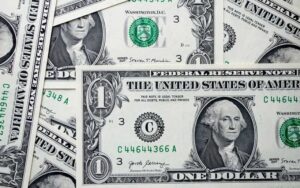BRICS and De-dollarization: An Alternative or Potential Disaster?
BRICS, 23 Sep 2024
Rendy Artha Luvian | Modern Diplomacy - TRANSCEND Media Service
From 22 to 24 Oct 2024 a BRICS summit will be held, with a key agenda discussing the potential use of a gold-backed common currency.
19 Sep 2024 – BRICS, a group of countries consisting of Brazil, Russia, India, China, and South Africa, has been an important player in the global economy since its formation. Their main goal is to strengthen economic and political cooperation among member countries and reduce dependence on a global financial system dominated by Western nations, especially the United States. The dominance of the US dollar as the global reserve currency and primary transaction tool has created significant reliance on a monetary system controlled by Washington.
BRICS’ de-dollarization initiative aims to reduce reliance on the dollar and create a more independent alternative for international transactions. Initial steps include establishing the New Development Bank (NDB) and Contingent Reserve Arrangement. However, these steps have not yet fully met the initial expectations. BRICS is now considering using a gold-backed currency as a more stable alternative, less affected by global political fluctuations. However, how will this impact countries like Indonesia? Will it provide an alternative to balancing the international monetary system or carry the potential for disaster?
The De-dollarization Initiative and Why BRICS is Considering a Gold-backed Currency
One of BRICS’ latest initiatives is developing a new payment system that does not require the US dollar. This system is designed to facilitate cross-border transactions using advanced digital technologies, including blockchain. Although the system is still under development, there is speculation about the possibility of using a gold-backed currency as part of this system.
A gold-backed currency could offer greater stability compared to fiat currencies, which are influenced by monetary policies and inflation. Gold has long been considered a reliable store of value and can act as a hedge against currency fluctuations. By linking the value of currency to gold, BRICS hopes to create an alternative more resilient to global economic instability and international sanctions that frequently affect member states.
However, despite being backed by gold, the monetary system proposed by BRICS would still fundamentally rely on usury, as interest rates would continue to play a central role. Over time, this reliance on interest-bearing mechanisms could lead to the gradual decoupling of the BRICS currency from gold. As financial institutions seek greater flexibility in responding to market demands and economic growth, the temptation to inflate the currency or adjust monetary policy could erode the initial gold standard. This scenario mirrors historical trends where currencies, despite starting as gold-backed, eventually severed their ties to precious metals in favor of more adaptable, fiat-based systems.
The History of Gold in the International Monetary System
Gold has long been used as a medium of exchange and a store of value. In the history of the international monetary system, gold played a significant role as the global currency standard, known as the Gold Standard. In 1944, the Bretton Woods Conference established a new international monetary system where the US dollar became the primary reserve currency and was exchangeable for gold at a fixed rate. This system gave the US significant power in international trade. Unfortunately, the exchange rate of the dollar to gold continued to rise, as more dollars were printed and circulated globally than the available gold reserves.
This indicated an abuse of power by printing excessive dollars, even without sufficient gold reserves to back them. Eventually, in 1971, President Richard Nixon announced the decoupling of the US dollar from gold (The Nixon Shock), starting the era in which the dollar became a fiat currency backed only by market trust, not by gold reserves.
With this transition, the US dollar became the primary currency for oil trading, leading to the term petrodollar, and the global financial system shifted to depend more heavily on the dollar. This change allowed the US to gain significant advantages, including the ability to run large trade deficits and impose economic sanctions on countries that opposed US foreign policy. International trade was conducted almost exclusively in dollars, even after it was no longer linked to gold. Oil maintained the dollar’s value afterward because, before the COVID-19 pandemic, almost 100 percent of oil trade was conducted in US dollars. However, by 2023, it was reported that one-fifth of oil trade was conducted in currencies other than the US dollar.
The instability caused by US monetary policies can broadly affect the global economy, pushing countries like BRICS to seek more stable alternatives.
Challenges and Risks of a Gold-backed Digital Currency in BRICS
A gold-backed currency offers various advantages, including value stability and protection against inflation. By linking currency value to gold, BRICS can reduce volatility and create a more stable alternative compared to fiat currencies. This could also help member countries reduce dependence on the US dollar and enhance their economic independence.
Implementing a gold-backed currency in a digital system could combine the stability of gold with the efficiency of blockchain technology, which offers transparency and speed in international transactions. This system has the potential to increase international trade efficiency and reduce transaction costs associated with currency conversion.
However, implementing a gold-backed digital currency faces technical and regulatory challenges. Blockchain system security and data protection are primary concerns, as are potential issues related to the interoperability of existing international systems. Using a gold-backed digital currency as the basis for a BRICS currency could create vulnerabilities related to the stability and integrity of the monetary system. While blockchain offers transparency, there are risks associated with potential cyberattacks and system failures. Additionally, reliance on new technology could pose challenges in integrating with existing global financial systems.
The next question that arises is whether BRICS will repeat what the US did in the past—printing and multiplying currency recklessly, even without sufficient gold reserves to back it. This potential could lead countries working with BRICS into the same trap, once again, including Indonesia, which cannot avoid its connections with BRICS.
Indonesia’s Strategic Role
Indonesia has activated the LCT (Local Currency Transaction) National Task Force to strengthen the use of local currencies in international transactions. Involving Bank Indonesia and nine ministries/agencies, this effort aims to diversify currencies in bilateral transactions and increase exchange rate stability. This initiative, aligned with BRICS’ de-dollarization efforts, reflects Indonesia’s commitment to reducing reliance on the US dollar and supporting regional payment systems.
As one of the BRICS-affiliated countries, Indonesia plays a strategic role in this de-dollarization initiative. By introducing special tasks to support the use of the Rupiah in bilateral transactions and promoting local payment systems, Indonesia contributes to BRICS’ efforts to reduce dependence on the US dollar. These efforts include launching a cross-border payment system with Singapore and developing a universal QR code for regional payments in ASEAN.
De-dollarization could offer significant benefits to BRICS countries, including Indonesia, by reducing exposure to US dollar fluctuations and economic sanctions. Additionally, by increasing intra-ASEAN and regional trade, BRICS can strengthen its position in the global economy and reduce dependence on Western financial systems.
It is important to be cautious of what has happened in the past. History has shown that major changes in the monetary system can have broad impacts, both positive and negative. Trust in a particular currency or financial system can easily be exploited. The potential success of BRICS currency in breaking the dollar’s dominance in international trade is just as great as the potential for BRICS to lead the world into a state of economic instability. The Nixon Shock has proven how capitalist tools can deceive the world; will BRICS repeat the same step in the future, with currency that can be printed by simply typing numbers on a screen, if they no longer care about the foundational idea of using gold reserves?
___________________________________________
 Rendy Artha Luvian was born in Yogyakarta, Indonesia on 25 Nov 1986. Currently residing in Bekasi, he is pursuing his postgraduate studies at the Faculty of Social and Political Sciences at Gadjah Mada University.
Rendy Artha Luvian was born in Yogyakarta, Indonesia on 25 Nov 1986. Currently residing in Bekasi, he is pursuing his postgraduate studies at the Faculty of Social and Political Sciences at Gadjah Mada University.
Go to Original – moderndiplomacy.eu
Tags: Anglo America, Anti-hegemony, Anti-imperialism, BRICS, BRICS Central Bank, BRICS Currency, De-dollarization, Economics, Finance, International Trade, Multipolar World Order, New Development Bank, Regions, US empire
DISCLAIMER: The statements, views and opinions expressed in pieces republished here are solely those of the authors and do not necessarily represent those of TMS. In accordance with title 17 U.S.C. section 107, this material is distributed without profit to those who have expressed a prior interest in receiving the included information for research and educational purposes. TMS has no affiliation whatsoever with the originator of this article nor is TMS endorsed or sponsored by the originator. “GO TO ORIGINAL” links are provided as a convenience to our readers and allow for verification of authenticity. However, as originating pages are often updated by their originating host sites, the versions posted may not match the versions our readers view when clicking the “GO TO ORIGINAL” links. This site contains copyrighted material the use of which has not always been specifically authorized by the copyright owner. We are making such material available in our efforts to advance understanding of environmental, political, human rights, economic, democracy, scientific, and social justice issues, etc. We believe this constitutes a ‘fair use’ of any such copyrighted material as provided for in section 107 of the US Copyright Law. In accordance with Title 17 U.S.C. Section 107, the material on this site is distributed without profit to those who have expressed a prior interest in receiving the included information for research and educational purposes. For more information go to: http://www.law.cornell.edu/uscode/17/107.shtml. If you wish to use copyrighted material from this site for purposes of your own that go beyond ‘fair use’, you must obtain permission from the copyright owner.
